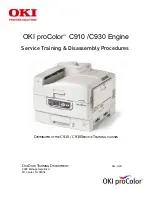
14
UBI EasyCoder 301 Direct Protocol – Programmer's Guide Ed. 1
Chapter 3 Principles of Operation
Files can be stored in the EasyCoder 301 on one of four devices:
• "ROM:"
Contains the built-in files necessary for using the printer.
• "RAM:"
Contains files created by the user.
• "CARD1:"
A PCMCIA card in the slot nearest the ON/OFF switch, which
can be a DOS-formatted card or a specially formatted font
cartridge.
• "CARD2:"
A PCMCIA card in the slot farthest from the ON/OFF switch,
which can be a DOS-formatted card or a specially formatted font
cartridge.
The files in each device can be listed using the
FILES
command,
e.g.
FILES "RAM:"
In general, ROM: and font cartridges in "CARD1:" or "CARD2:"
are read-only devices: you cannot create, copy or delete files on
these devices, e.g. the following commands would cause errors:
FILE&LOAD "ROM:NEWFILE",123
COPY "RAM:OLDFILE","CARD1:NEWFILE"
(if CARD1: contains a font cartridge)
KILL "CARD2:OLDFILE"
(if CARD2: contains a font cartridge)
In contrast, "RAM:" and DOS-formatted cards in "CARD1:" or
"CARD2:" are read/write devices which support all file operations.
When using a Direct Protocol command which has the name of an
existing file as a parameter, you can:
• specify the device name before the filename,
e.g.
KILL "RAM:MYFILE.TXT"
• omit the device name,
e.g.
KILL "MYFILE.TXT"
in which case, the printer will search each device in turn until it
finds a file with this name.
If you use a Direct Protocol command which creates a file, you can:
• specify the device on which the file is to be stored,
e.g.
FILE&LOAD "CARD1:MYFILE.TXT", 123
• omit the device name,
e.g.
FILE&LOAD "MYFILE.TXT", 123
in which case the file will be stored on "RAM:".
13. File Storage
Devices and File
Names















































